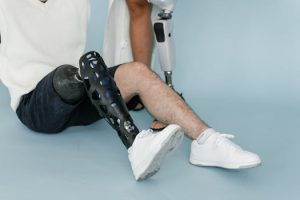Carbon Footprint Tracking Wearables: Personal Environmental Impact Monitoring Devices
In today’s world, where environmental issues are becoming increasingly pressing, people are looking for ways to easily track their carbon footprint and minimize their impact on the planet. This is where carbon footprint tracking wearables come into play. These innovative devices are designed to monitor personal environmental impact and help individuals make more eco-friendly choices in their daily lives. In this article, we’ll explore the concept of carbon footprint tracking wearables and how they can make a positive difference to the environment.
The need for carbon footprint tracking wearables
Climate change and its effects are undeniable, and most of it is caused by human activities. The average person produces around 4-48 tons of carbon dioxide per year, which not only contributes to climate change but also harms the overall quality of air, water, and soil. The good news is that individuals can make a significant impact on reducing their carbon footprint by tracking their daily activities and making small changes in their lifestyle.
Traditional methods of tracking carbon footprint, such as keeping a journal or using a carbon calculator, can be tedious and time-consuming. This is where the need for carbon footprint tracking wearables arises. These devices are designed to seamlessly integrate into daily life and provide real-time data on an individual’s carbon impact, making it easier to track and reduce their carbon footprint.
How do carbon footprint tracking wearables work?
Carbon footprint tracking wearables come in various forms, including smartwatches, fitness bands, and even clothing. These devices use built-in sensors and GPS technology to track an individual’s daily activities, such as travel, exercise, and energy usage. This data is then analyzed and converted into a measure of an individual’s carbon footprint.
The tracking process is not limited to just carbon emissions; it also includes factors such as water usage, waste management, and energy consumption. This comprehensive approach gives individuals a more accurate understanding of their environmental impact and enables them to make informed decisions to minimize it.
The benefits of using carbon footprint tracking wearables
1. Increased awareness
One of the significant advantages of using carbon footprint tracking wearables is that it increases awareness of an individual’s daily carbon impact. By having access to real-time data, individuals can visualize how their activities affect their carbon footprint and make necessary changes to reduce it.
2. Encourages sustainable habits
Carbon footprint tracking wearables can also serve as a constant reminder to individuals to make more sustainable choices in their daily lives. For example, seeing the amount of carbon emitted from driving a car may encourage individuals to choose more eco-friendly modes of transportation, such as walking, biking, or using public transport.
3. Personalized goals
Many carbon footprint tracking wearables come with features that allow users to set personalized goals for reducing their carbon footprint. This not only makes the process more engaging but also allows individuals to take a more proactive approach towards reducing their impact on the environment.
Other benefits of using carbon footprint tracking wearables include its user-friendly interface, ease of use, and the ability to track progress over time.
Limitations of carbon footprint tracking wearables
While carbon footprint tracking wearables can be beneficial in reducing an individual’s environmental impact, they do come with some limitations. Firstly, the accuracy of the data may vary depending on the device and its sensors. Factors such as weather and location may also affect the accuracy of the data.
Another limitation is that these devices only track the activities of an individual and do not consider external factors that may contribute to an individual’s carbon footprint, such as the manufacturing and transportation of goods. Therefore, individuals should not solely rely on these wearables to track their carbon footprint but should also make conscious efforts to make sustainable choices in their daily lives.
In conclusion
Carbon footprint tracking wearables are a revolutionary and innovative way of tracking and reducing an individual’s environmental impact. By increasing awareness, encouraging sustainable habits, and providing personalized goals, these devices can make a significant difference in reducing greenhouse gas emissions on a global scale. While they may have some limitations, their potential to create a positive impact on the environment cannot be ignored. So, if you want to do your part in reducing your carbon footprint, consider investing in a carbon footprint tracking wearable and start making a positive change in the world today.











